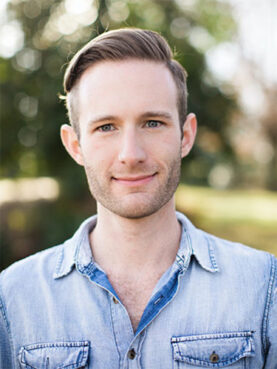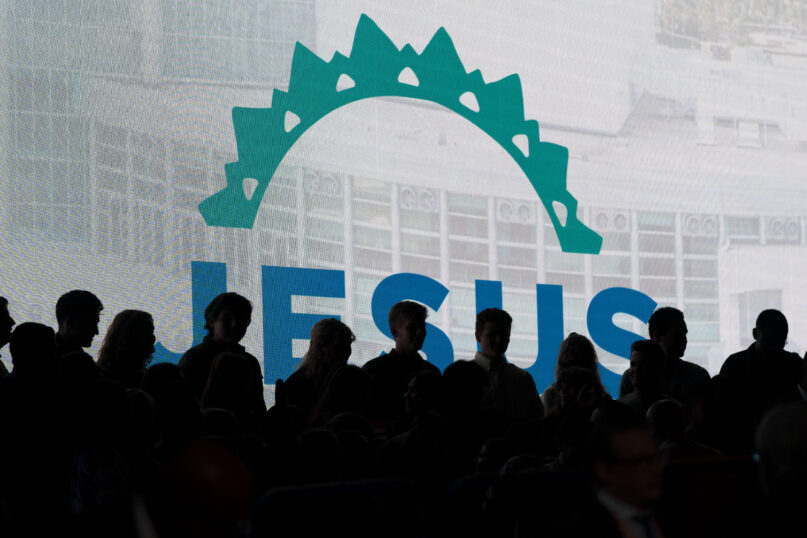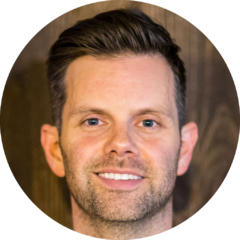(RNS) — When Jann Aldredge-Clanton enrolled at Southwestern Baptist Theological Seminary in 1982, she considered herself a bona fide evangelical Christian with a reverence for the Bible and a love for the church. It soon became clear that neither her Southern Baptist denomination nor the wider evangelical world held much space for her.
In her preaching class, male students who objected to women teaching men criticized her sermons. One male student in another class dismissively asked if she came to seminary to get an “M-R-S” degree. Her growing interest in feminist theology made her feel like an outsider among her conservative classmates, who felt such ideas were heretical. As graduation neared in 1985, Aldredge-Clanton was informed by the seminary’s placement office that it only sought to place males as pastors. After her applications to evangelical churches across Texas went unanswered, she took the hint.
“It had finally been made clear to me that as an ordained woman and a feminist, I was on the outs as a Southern Baptist and in the evangelical world,” she told me recently, “so I took a job as an associate minister at a United Methodist church instead.”
The same year Aldredge-Clanton entered seminary, I was born in a hospital near Louisville, not far from the Southern Baptist Theological Seminary where my father was completing a Ph.D. Our family and the churches I grew up in regarded people like Aldredge-Clanton — as well as political progressives, gay people and other outliers — as threats to orthodoxy who should be barred from denominational life.
These views were abetted by a coup by fundamentalist factions within the Southern Baptist Convention beginning in the late 1970s. These conservative crusaders seized control of the denomination’s seminaries and agencies, installing new leaders and boards who then ejected anyone who questioned their agenda. Seminary presidents and professors deemed suspect were dismissed, pastors and missionaries who waffled on conservative ideology risked ostracism, congregations that welcomed gays and lesbians were disfellowshipped. Ordained women, along with their feminist allies, were driven away in shame.
Though it would be decades before I’d begin to meet the casualties of this crusade, I now seem to stumble upon them nearly everywhere. Unlike the caricatures I’d been given, those I meet are mostly salt-of-the-earth Christians such as Aldredge-Clanton, whose lives and ministries bear witness to faithfulness and whose painful stories of exclusion are indictments of many of the men I once held in high regard.
The cleansing of the Southern Baptist Convention turned out to be a microcosm of a much larger purge that had been quietly unfolding among American evangelicals throughout the 20th century. Today’s evangelicalism, at least three-fourths white and dominated by male leaders and patriarchal ideology, is so uniformly politically conservative that many people think of it less as a religious movement and more as a Republican voting bloc.
This straightening of the movement is the subject of “The Other Evangelicals,” a new alternative history by Union Theological Seminary professor Isaac Sharp, who writes, “The big tent of evangelicalism has historically been much bigger than we’ve been led to believe.”

“The Other Evangelicals: A Story of Liberal, Black, Progressive, Feminist, and Gay Christians― and the Movement That Pushed Them Out” by Isaac B. Sharp. Courtesy image
Once upon a time, evangelicalism made room for vibrant constituencies including feminists, progressives, Black people and even queer people who shared a born-again experience, held the Bible in high regard and hoped to convert the world with the Christian gospel. Their stories have largely been lost due to the cozy relationship between history’s winners and history’s writers.
In his book, Sharp introduces readers to born-again feminist scholars who once freely preached a gospel of equality from within the movement’s borders. He recalls a time when coalitions like the National Black Evangelical Association served as a counterbalance to the movement’s racial naivete and animosity.
Sharp reminds readers that the movement was once bespeckled by political leftists like Ron Sider’s Evangelicals for Social Action and Jim Wallis’ Sojourners, as well as Evangelicals for McGovern, which acted as a religious counterbalance to the Billy Graham-led Nixon alliance in the 1972 presidential election. Sharp tells of evangelical churches where gay and lesbian Christians were once fully welcomed into congregational life.
“Most people think of evangelicals as white, conservative, anti-gay, and patriarchal, but evangelical identity has evolved over time, and in certain ways, it has gotten narrower,” Sharp told me in a phone interview. “One of the ways you can tell it’s gotten narrow is by tracing these figures who got defined out of the movement and found themselves on the outside looking in.”
Unlike, say, Roman Catholicism, evangelicalism lacks any official doctrine by which to judge orthodoxy. No designated person or body authoritatively polices the boundaries. But it’s precisely its diffuse nature that makes evangelicalism vulnerable to fierce border guarding and litmus-testing by leaders who amass enough popularity to “farewell” those who don’t conform to majoritarian views and demands.
In 2004, Jerry Falwell Sr. famously dismissed Wallis, calling him “as evangelical as an oak tree” for voting for Democrats. In 2011, theologian John Piper bade Rob Bell farewell after Bell theologized that there was no hell. Most recently, California pastor John MacArthur simply told Bible teacher Beth Moore, “Go home.” Each of these moments succeeded in pushing the farewelled leaders, to varying degrees, to the margins.
But Sharp points out that evangelicalism’s great purge depended on more than lone charismatic leaders issuing unilateral decrees. In the years after World War II, fundamentalist leaders began founding institutions such as the National Association of Evangelicals and the Evangelical Theological Society to commandeer the “evangelical” name, all but trademarking the word.

Isaac Sharp. Photo via Union Theological Seminary
“From that point forward, their kinds of evangelicals would become the real, card-carrying kind, and evangelicalism would become adjudicated according to their standards,” Sharp writes. “For the rest of the 20th century, these evangelicals would become the evangelicals.”
The NAE, founded in the 1940s, appointed itself the movement’s de facto representative, establishing a seven-point faith statement designed to exclude Christian who held views considered too progressive. The Evangelical Theological Society was founded in 1949 to “foster conservative biblical scholarship.”
Christian schools were established as homes for that type of scholarship. Falwell’s Liberty University, founded in 1971, branded itself the “evangelical Notre Dame,” and a new crop of evangelical seminaries spearheaded the fight against the rising tide of liberalism in higher education. I bought into this idea of an evangelical elite education, attending Liberty before following my father’s path to vocational ministry.
Eventually these institutional gatekeepers, founded to protect evangelicals from malign outside influences, turned on those inside the walls. Focus on the Family, the Family Research Council and other such agencies sussed out any hints of the so-called gay agenda in evangelical circles and snuffed them. Coalitions such as the Council on Biblical Manhood and Womanhood worked to attack and delegitimize evangelical feminists.
Over time, minority groups and individuals that had moved within evangelicalism for decades were pushed out. Evangelicalism became whiter, straighter, more patriarchal and more conservative theologically and politically as institutionalism proved to be a powerful mechanism for marginalization.
For someone like me, “The Other Evangelicals” is like stumbling onto a trove of forgotten family lore: It tells how things I’d accepted as timeless truths were shaped by events of the none-too-distant past. Sharp connects the expulsions and exoduses of people like Richard Cizik, Sheri Klouda, Bruce Waltke, Pete Enns, Charlie Dates, Rick Warren, Sam Joeckel and many others.
And also me.
In 2012, I was a minister at an evangelical church in Atlanta. I loved our congregants — from the cooing preschoolers to the purple-haired octogenarians. I served them faithfully for more than four years, and I would have served them for many more had I not been outed as gay. In a blink, it became clear I needed to leave the church I loved, the Southern Baptist Convention and the broader evangelical world.
Sharp’s book helped me to understand the motivation and mechanisms that have led to evangelicalism’s constricting homogeneity. The tactics could not be more counterproductive, and raise the possibility that evangelicalism may not survive its own success.
The core mission at the heart of evangelicalism is enlarging Christianity, yet the movement itself is shrinking. White evangelicals made up 23% of the U.S. population in 2006, shortly after they were credited with helping reelect George W. Bush, but plummeted to 14.5% of the population by 2020.
Of course, religiosity has generally declined in America, but evangelicals’ share has declined about four times faster than liberal mainline Protestants’ during this period.
For me and many like me, being pushed out of evangelicalism was like being fired from a toxic work environment: a loss, but also a blessing. Leaving that world saved me from ongoing harm inflicted by a community that was willing to accept a person like me only if I committed to an excruciating life of loneliness and celibacy. Being farewelled from evangelicalism expedited my journey to healing and wholeness, yet that doesn’t make it less painful.
Sharp’s context offers some comfort to those of us who’ve left evangelicalism behind, but what about those who’ve chosen to stay, hoping to free their tradition from its chronic entanglement with Trumpism, sexism, white nationalism and homophobia?
For them, “The Other Evangelicals” reads like a warning.
“I can’t begrudge those who want to stay evangelical and work for change, but I hope to remind them of just how resistant evangelicalism is to change,” Sharp told me. “Efforts to reform evangelicalism spanning a century have almost always failed and have typically been met with overwhelming backlash.”
The irony is hard to miss: A movement that has sought to save the world has ensured that it cannot itself be saved.






